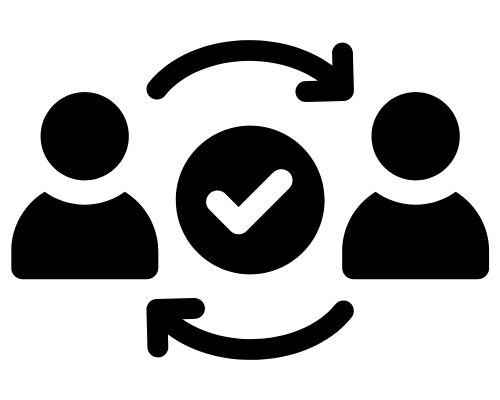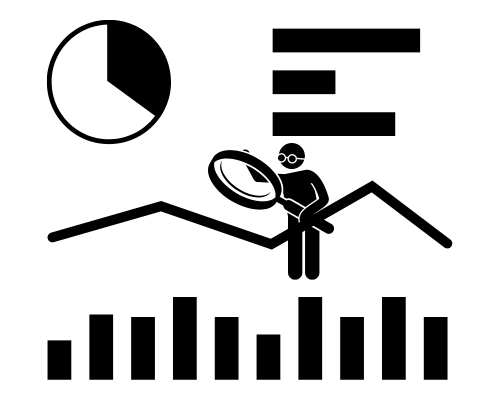This article contains affiliate links – but that doesn’t mean this piece is an ad.
All content is our honest take on the service/product and incorporates our
real thoughts and experience using it.
What if I told you there’s a powerful psychological principle that could dramatically boost your marketing efforts without draining your budget? Enter the rule of reciprocity, a game-changer that can transform the way you engage with your audience and drive conversions.
Let’s explore how you can harness this principle to supercharge your marketing strategy.
Table of Contents
Understanding the Rule of Reciprocity

The rule of reciprocity is a social norm that suggests people are inclined to return a favor when someone does something for them. This principle is expertly explained by Robert Cialdini in his seminal book, Influence: The Psychology of Persuasion.
Cialdini illustrates how humans are wired to feel obligated to reciprocate acts of kindness or generosity, making it a powerful tool in the marketer’s arsenal.
(I highly recommend reading the book if you want to get a good grasp on human behavior.)
Applying Reciprocity in Your SaaS Marketing
1. Offer Valuable Free Content
One of the simplest ways to use the rule of reciprocity is by providing valuable content for free. This could be in the form of blog posts, eBooks, webinars, or even free tools. By offering something of value without expecting anything in return, you create a sense of indebtedness in your audience.
What does this look like?
Create a comprehensive eBook or guide that addresses a common pain point in your industry. For example, if your SaaS product is a project management tool, you could write an eBook titled “10 Strategies to Enhance Team Productivity.” Promote this eBook through your website and social media channels, requiring only an email address to download.
2. Free Trials and Freemium Models
Offering a free trial or a freemium version of your SaaS product is another excellent application of reciprocity. By allowing users to experience the value of your product without any upfront cost, you build trust and demonstrate your product’s worth.
Now, there’s one thing to note. As a society, we’ve become quite numb to free trials so a generic trial or freemium model is often met with a bit of entitlement rather than gratitude.
While I’m still trying to nail down the best way to avoid this, here are a few things I’d suggest incorporating to help trigger the RoR instead of entitlement:
- Make it personal. Don’t just offer them a free trial, create a connection by telling them the story behind the project, team, your mission, etc. This will help create a more personal connection with you, helping to engage the rule of reciprocity.
- Don’t refer to it as a free trial. Offer it as a gift, or suggest that it’s a personal favor that you’re doing (it is).
- Ask for something in return. It doesn’t have to be payment, but engage the user by asking for feedback or something other than something monetary. “Hey, I hope my platform provides you with plenty of value doing X, Y, Z. I’d really appreciate it if you could spend 1-2 minutes filling out this quick survey on your experience.”
What does this look like?
If you don’t already offer a free trial, consider implementing a 14-day free trial period for your premium features. Ensure that your onboarding process during this trial period is smooth and educational, helping users to fully realize the benefits of your product.
3. Personalized Help and Support
Providing exceptional customer support and personalized assistance can also trigger the reciprocity effect. When users feel that you genuinely care about their success, they are more likely to reciprocate by continuing to use your product, recommending it to others, or upgrading to a paid plan.
What does this look like?
Implement a live chat feature on your website where users can ask questions and receive immediate assistance. Additionally, consider sending personalized onboarding emails to new users, offering to help them set up and get the most out of your product.
4. Surprise and Delight
Occasionally surprising your customers with unexpected perks can create a strong sense of reciprocity. This could be an unannounced feature update, a discount code, or even a simple thank-you note.
What does this look like?
Send an unexpected thank-you email to your long-term users, offering them a special discount on their next subscription renewal or a free upgrade to a higher tier for a limited time.
Case Study: HubSpot’s Reciprocity in Action
HubSpot, a leading marketing, sales, and service software provider, has effectively used the rule of reciprocity in their marketing strategy. They offer an abundance of valuable content through their blog, which covers a wide range of topics related to marketing, sales, and customer service. Additionally, HubSpot provides a free CRM tool that allows users to experience the value of their platform without any financial commitment.
HubSpot’s approach has not only helped them build a loyal user base but has also positioned them as a thought leader in the industry. By consistently giving away valuable resources, HubSpot has created a strong sense of goodwill and trust among its audience, leading to higher conversion rates and customer retention.
Measuring and Enhancing Your Reciprocity Efforts

To ensure that your efforts are paying off, it’s crucial to track the effectiveness of your reciprocity-based strategies. Track key metrics such as user engagement, conversion rates, and customer retention to gauge the impact of your initiatives.
Actionable Step: Use tools like Google Analytics and your own SaaS platform’s analytics to track the performance of your free content, free trials, and customer support interactions. Set specific goals and regularly review your data to identify areas for improvement.
Embracing the Rule of Reciprocity
The rule of reciprocity is a potent tool that can help indie developers and small team startups achieve significant marketing success even on a limited budget. By offering value upfront, providing exceptional support, and occasionally surprising your customers, you can build strong, reciprocal relationships that drive growth and loyalty.
Remember, the key is to be genuine in your efforts and consistently look for ways to add value to your audience. By doing so, you’ll not only enhance your brand’s reputation but also create a loyal customer base that is more likely to reciprocate your generosity.
Embrace the rule of reciprocity today, and watch your marketing efforts transform your SaaS business. Happy marketing!




